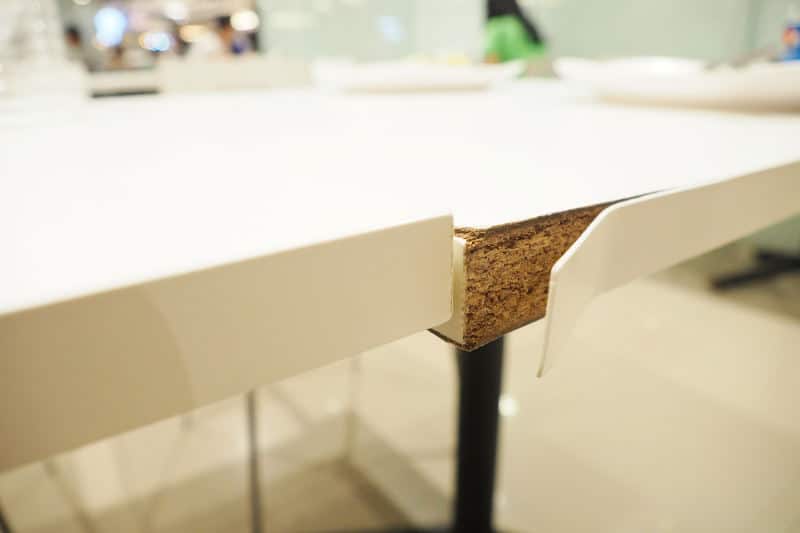Wood has been an essential material in construction and interior design for centuries, thanks to its natural beauty, durability, and versatility. However, as technology evolves, more cost-effective alternatives like particleboard, fiberboard, and plastic materials have emerged, leaving us to wonder whether wood still holds its appeal in today's modern world.

Thankfully, wood veneer panels have come to the rescue, offering a perfect balance between aesthetics, performance, and affordability. In this blog, we will explore what wood veneer panels are, how they are made, and why they are the ultimate design material for your home.
What are Wood Veneer Panels?
As we mentioned earlier, veneer refers to thin slices of wood that are typically glued onto a core panel to produce flat panels used for various applications in construction and interior design. Wood veneer panels are sheets of wood veneer that are either pre-finished, unfinished, or semi-finished and bonded to a core panel using industrial adhesives.
The core panel can be made of wood, particleboard, or medium-density fiberboard (MDF), depending on the intended use and budget. The result is a panel that looks and feels like solid wood but with improved dimensional stability, strength, and durability.
How are Wood Veneer Panels Made?
The process of making wood veneer panels involves several steps, including sourcing, slicing, grading, drying, and bonding. Let's look at each step in detail.
Sourcing
The first step in making wood veneer panels is to source high-quality logs of the desired species. The species must meet certain criteria such as color, texture, grain, and figure to ensure consistency in the finished product.
Slicing
Once the logs have been sourced, they are sliced into thin sheets called veneers using a specialized machine called a veneer slicer. The thickness of the veneers can range from 0.3mm to 6.0mm, depending on the intended use.
Grading
The sliced veneers are sorted and graded based on their color, grain, figure, and defects such as knots, splits, and checks. The grading process ensures that each veneer sheet has the same quality and appearance, making it easier to match them during assembly.
Drying
After grading, the veneer sheets are dried using a kiln or air-drying method to reduce their moisture content to the desired level. This helps to prevent warping, cracking, and other forms of deformation when bonding them to the core panel.
Bonding
Finally, the dried veneer sheets are bonded to the core panel using an industrial adhesive such as urea-formaldehyde, phenol-formaldehyde, or polyvinyl acetate (PVA). The bonding process can be done using different techniques such as hot-pressing or cold-pressing, depending on the adhesive and the type of core panel used.
Why are Wood Veneer Panels the Ultimate Design Material for Your Home?
Now that we know what wood veneer panels are and how they are made, let's explore why they are the ultimate design material for your home.
Natural Beauty
Wood veneer panels offer the timeless beauty and warmth of natural wood, with each panel showcasing the unique characteristics of the species. They come in a wide range of colors, textures, and figures, from rustic oak to exotic teak, making them suitable for any design theme or style.
Customizable
Wood veneer panels are highly customizable, allowing you to achieve any design you have in mind. They can be cut to any size, shape, or pattern, making them ideal for creating feature walls, ceilings, doors, cabinets, and furniture.
Stable and Durable
Unlike solid wood, wood veneer panels are more stable and durable, thanks to the core panel that provides added strength and dimensional stability. They are less prone to warping, cracking, and other forms of deformation, making them ideal for high-traffic areas like kitchens, bathrooms, and living rooms.
Cost-effective
Finally, wood veneer panels offer a cost-effective alternative to solid wood, with prices ranging from $30 to $100 per panel, depending on the species, thickness, and finish. They offer the same aesthetic appeal as solid wood but at a fraction of the cost, making them suitable for both residential and commercial projects.
Conclusion
Wood veneer panels are the ultimate design material for your home, offering a perfect blend of natural beauty, performance, and affordability. They are customisable, stable, durable, and cost-effective, making them an excellent choice for any design theme or style. So, if you are looking to add some warmth and character to your home, consider using wood veneer panels.
